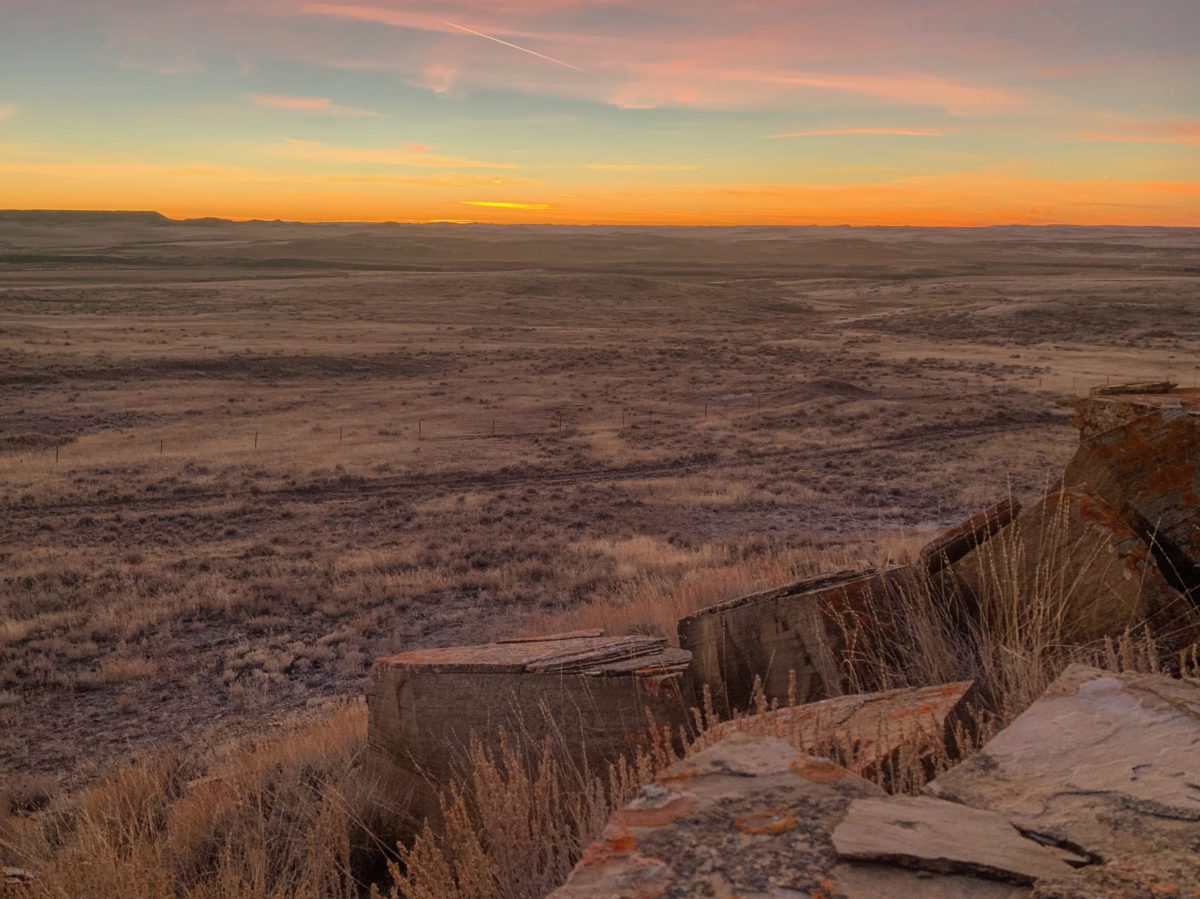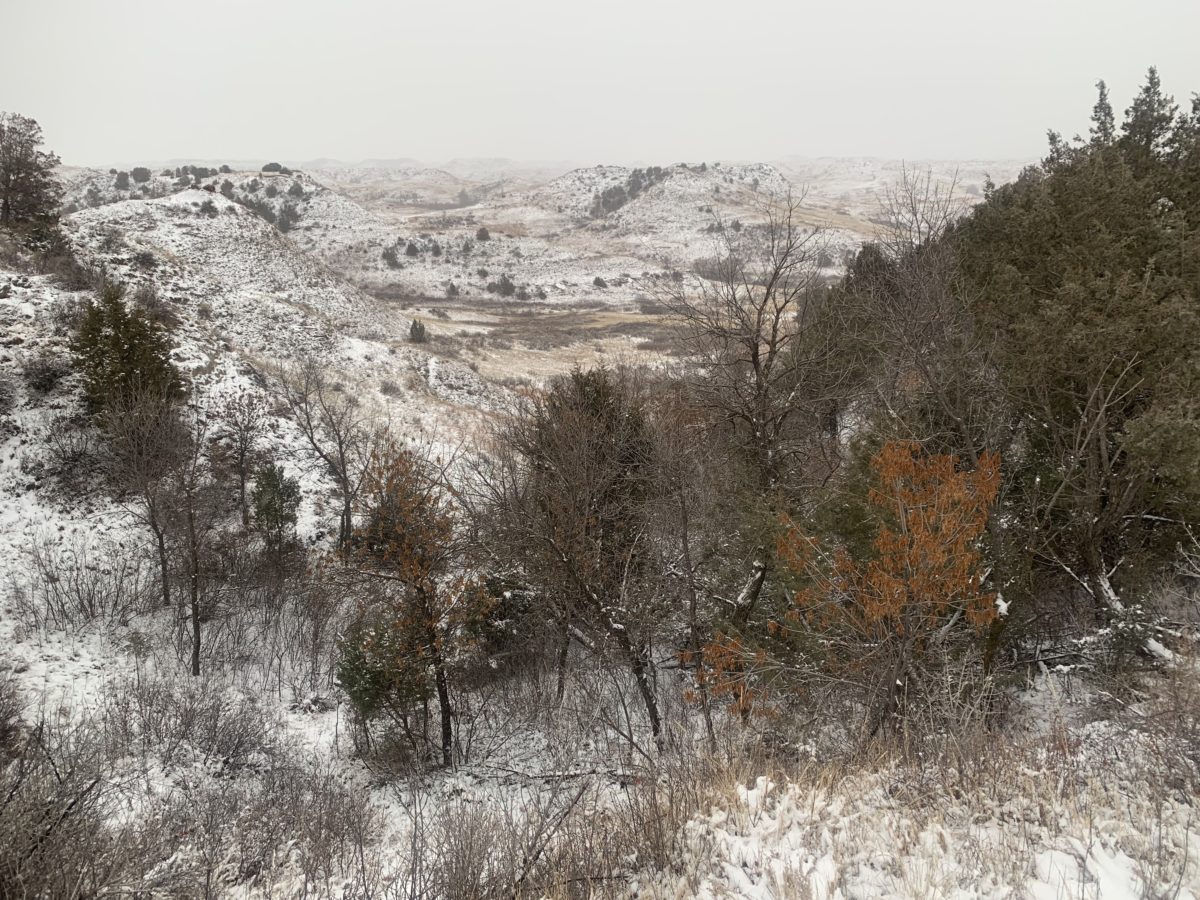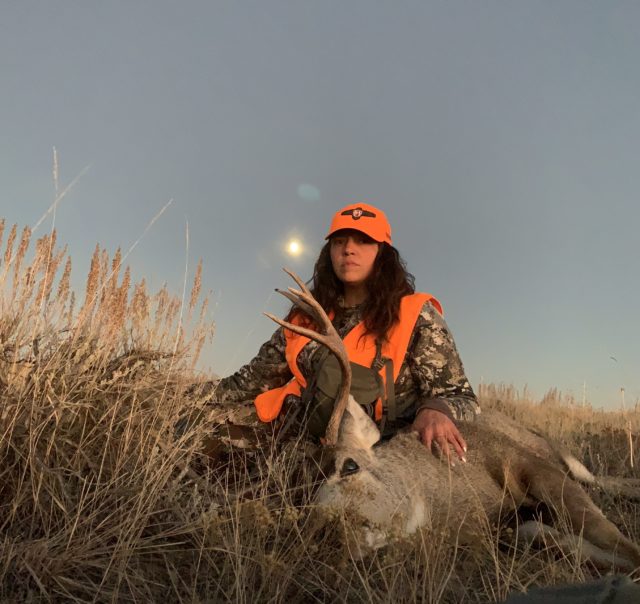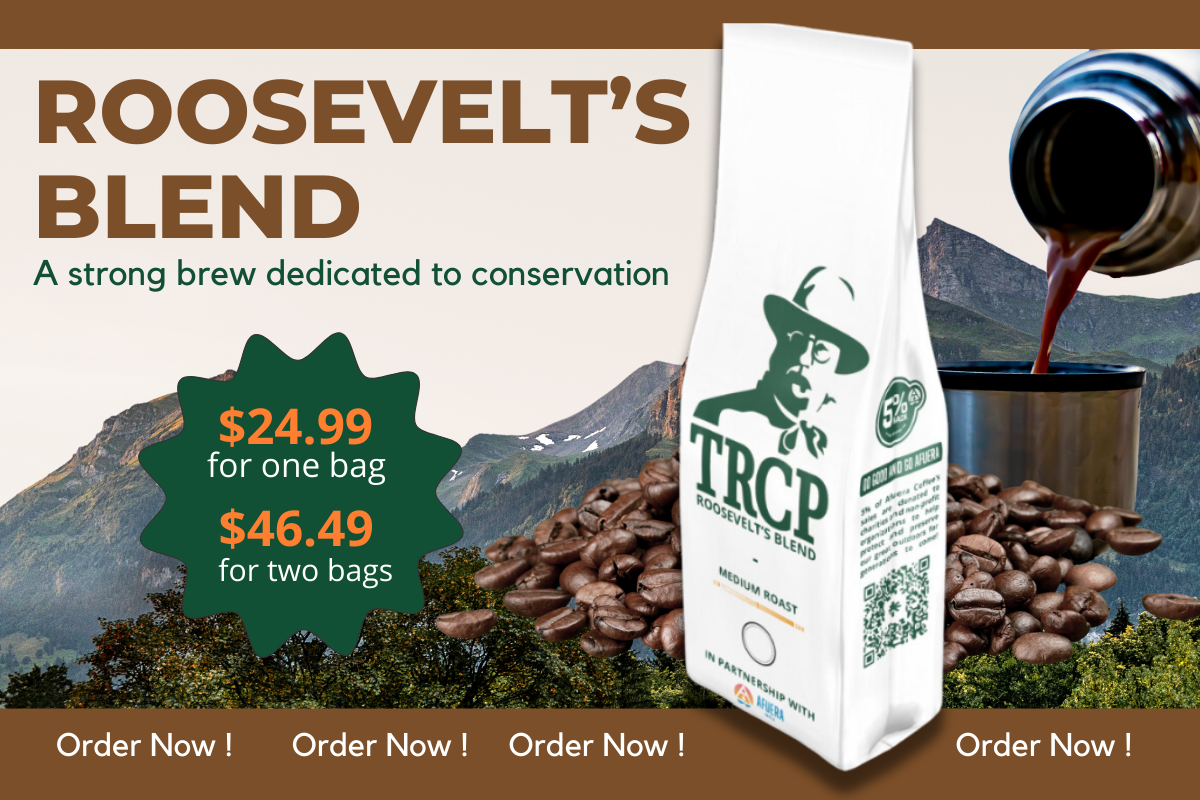A visit to Theodore Roosevelt’s ranch in the Fall of 2018 inspires a young mule deer hunter
Hunting season is here in my home state of Montana, and I’m headed east to look for mule deer. My dog in the backseat, my Weatherby .308 in its case, and my pack at the ready.
Opening the atlas for a quick survey of my route, a splash of green against the white only a few hundred miles ahead grabs me. Theodore Roosevelt National Park beckons from just over the North Dakota state line, right on the edge of the map. I decide hunting can wait for an afternoon. History calls.
The further east I get, the more the flat dreariness of winter-come-early sets in. The clear, dry roads become two lines edged in white, and the moody sky envelops much of the distant horizon. I’m one of only two cars when I roll into the parking lot at the visitor’s center.

Belongings and Bulletholes
The park sits on 70,446 acres that include parcels from Roosevelt’s original cattle ranches. And although the name itself has gone through a few iterations, no national park is more closely associated with a single individual.
Cottonwoods and red willows follow the Little Missouri River’s snaking path through the otherwise broken, sage-brushed landscape. Weather shrouds the tumbling edges of the park, clouds hugging the muted tones of this northern ground.
On display at the park’s headquarters are belongings and words from our twenty-sixth president. For the most part, they illuminate the mundane aspects of his life rather than the mythical. His cabin is preserved on ground, small and humble. There’s a note written to his brother. Photographs of T.R. and his friends. And a full tribute to his passion for birding, including a snowy owl he taxidermied himself. His essence fills the room. He becomes human here.
But it’s the bullet-holed shirt in the glass case that catches my imagination.
You likely know the story: In the course of Roosevelt’s failed bid for the presidency in 1912, a would-be assassin shot him before a scheduled address in Milwaukee. Fifty pages of notes stuffed into the candidate’s breast pocket slowed the bullet before it entered his chest, where it would stay for the rest of his life. Still, Roosevelt took the stage. Announcing that he had just been shot, he quipped that he probably wouldn’t talk long. He then carried on for 84 minutes.
This is a man who knew how to create a mythology.
In contrast to the ethereal nature of the Roosevelt lore is the tangibility of the public land beneath my boots, land that once held the footprints of the man himself. It stands as a powerful totem for the miles upon miles of public land that I’ve taken in as a hiker, backpacker, hunter, and angler. The reality of it makes its way into words as I continue into the park itself: T.R.’s life molded stories that still resonate in our cultural memory, but he also created a physical continuity of place for those, as he famously declared, still in the “womb of time.”
This is the same land where Roosevelt grieved the deaths of his mother and his wife, who both passed on the same day in 1884. In his mourning, he found solace among this wild and broken country. He then saw his own sense of loss reflected in the waning numbers of bison and other wildlife vanishing from the plains. With the strength he drew from the land, he derived a sense of purpose infused with hope.
This land beneath my boots became the fertile ground for the seeds of a national conservation ethic.

A Test of Wills in the Sagebrush
Back into the cold, with daylight quickly fading. Small snow flurries land on my eyelashes and shoulders. In the distance my searching eyes catch three big bull elk, animals reintroduced to this country, now thriving. The humped silhouettes of Roosevelt’s beloved bison graze on far hills. A bounding whitetail deer disappears into the cottonwoods, white flag waving. And then I pull around a corner to face a tank of a mule deer buck walking the edge of the road.
His head is low to the ground, and his behavior is strange. As the car moves closer, another set of tines below him grows visible. I can hear the deer grunting at each other. The smaller buck pins his ears and averts his gaze, submissive. The big guy drops down the hill, circling around until they’re head on. Antlers lock for one moment. Then, the bucks crash into each other with every amount of muscle in their powerful bodies. Pummeled backwards through the sage, the little buck is outmatched. He escapes with a poke in the butt and a chase along the hilly horizon.
The drama of this high-stakes encounter seems befitting of this place—T.R. himself was fond of an old-fashioned test of wills—and all the more-so because the mule deer so perfectly embodies the sagebrush country that shaped Roosevelt’s life.
It’s also a reminder that the rut is on and I’m planning to hunt in the morning, so I best get back on the road.
History, Hunting, and a Heavy Pack
To public land I go.
The days that follow take me to a wilderness study area, BLM land, and a national wildlife refuge. Each step in the rugged breaks country is another gift from Roosevelt’s generous legacy. I barely see a thing before spotting my buck from over a mile away on Montana state land.
I walk that mile through the sagebrush slowly and intentionally. I set up within a hundred yards, prone in the cold, wet dirt. I have the wind. And I study him thoroughly. He’s everything I love in a mule deer. Thick-bodied, wildly unibrowed, and handsome. Crowned like a king.
There are only a few days left in the season, and I promised myself I’d take the first ethical shot on an animal that presented the opportunity. I wait for what seems like an eternity for him to turn broadside, but in my heart I’m telling him to run and to run far and fast. With five minutes of shooting light to spare, he steps to the side. My heart isn’t ready, but the hunter within flips to fire and pulls the trigger. The hit is solid, well-placed. I chamber another round, but there’s no need. I put down my rifle, my heart breaks, I cradle my head in my hands.

Later, kneeling beside him, I notch the date into my tag: November 20, 2018. I roll the tag, tape it onto his leg, and begin to quarter him out.
Roosevelt’s glorious heritage is now mine to hold. I take it all in. My mule deer’s coat is thick, healthy, buoyant to the touch. He smells deeply sweet, a concentrated musk of sage and this arid earth beneath us. He made a life on habitat protected for his sake. The ground that sustained him will soon sustain me.
“I do not believe that any man can adequately appreciate the world of today unless he has some knowledge of—a little more than a slight knowledge, some feeling for and of—the history of the world of the past,” Roosevelt said.
And this knowledge is what brings me out of my initial grief and back to the sinew and muscle in front of me, to the sky going navy above me, and to the sagebrush sea before me. This is what brings me back to the privilege of being here—two hands on a deer and two feet on public ground.
The passage of time has seen the roots of our public lands heritage grow deeper. Roosevelt’s country has no doubt changed over the years, yet it remains intact. Still, the conservation ethic that he upheld and turned into a physical reality for all Americans remains imperiled to this day. It, too, takes a bullet in the chest and stands tall, time and time again.
As I quarter my deer, slowly, deliberately, I know that the great central task of upholding this public land inheritance and passing it along to those who come after me is a hell of a thing to take on. The weight of this uncertain future is heavy, and it rests on the shoulders of anyone who seeks to leave this place better than we found it.
I finish quartering my deer and fill my pack to overflowing. I tighten the straps on my shoulders, braced for the work ahead.
Nicole Qualtieri is the hunting and fishing editor for GearJunkie.com and a freelance creative. She’s an outdoorswoman, a public lands advocate, and an amateur gourmand. When the weather warms up, you’ll find her astride her little brown horse with a border collie in tow, high in the Montana hills.







